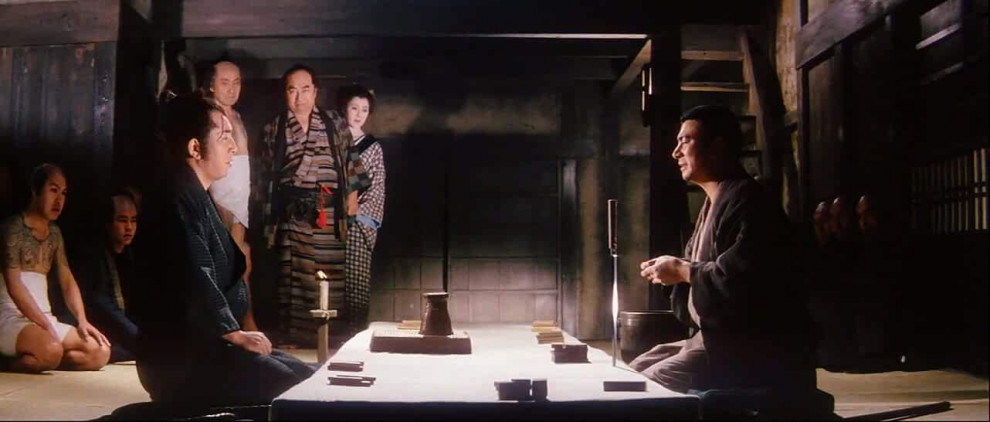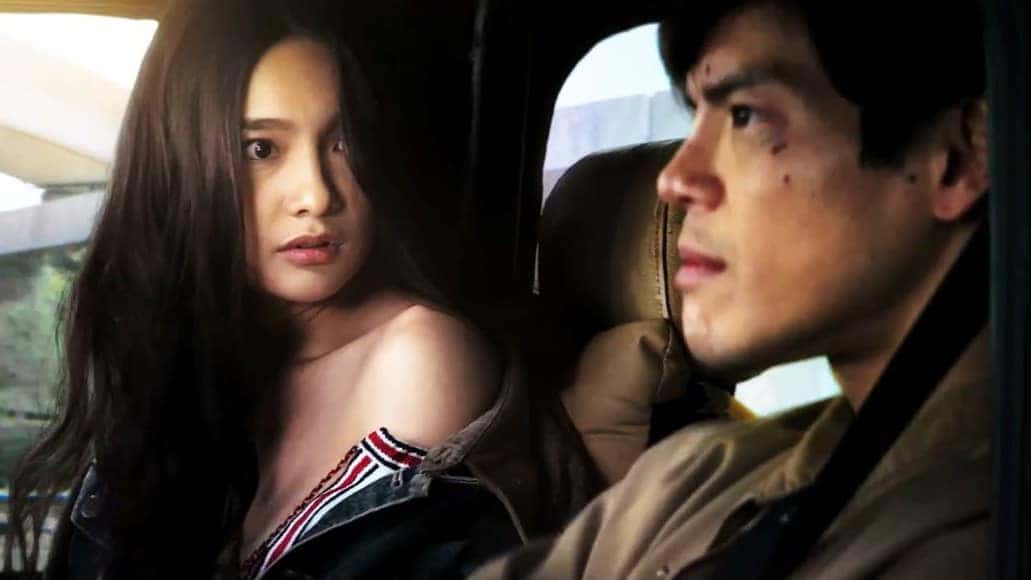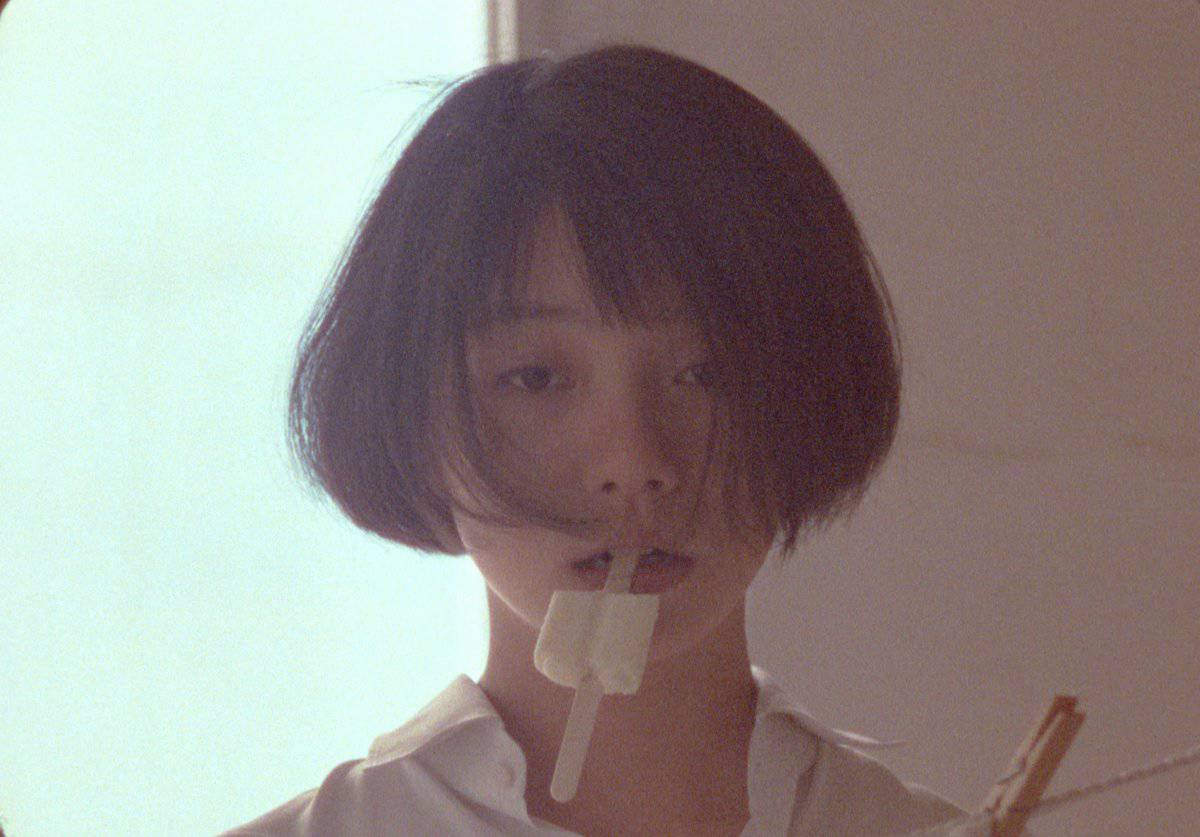Already the sixth entry in the series in three years (and the first of four in 1964), one would wonder if “Zatoichi and the Chest of Gold” would have anything new to offer to the series but right from the credits at the very start, director Kazuo Ikehara has a resounding “hell yes, it does” for you!
Buy This Title

On his way back from paying his respects at the grave of a man he regrets killing in a fight from a previous chapter, Zatoichi meets the villagers of the deceased's village Itakura who are in the midst of a celebration. They are rejoicing the fact that after a long period of hardships, they have finally been able to gather the one thousand ryo to pay their taxes to the local magistrate. However, on the way to the magistrate, the entourage with the chest containing the tax money is pounced upon by three samurais, led by whip-wielding Jushiro. Somehow, last to be seen in the chest's vicinity end up being Zatoichi and a group of Robin Hood-esque local yakuza Chuji's men, as a result of which the villagers' suspicion falls understandably on the two, prompting Ichi to head out to clear his own and Chuji's name, who he knows to be a noble man, and find the missing chest of gold for the villagers.
The visual differences which are going to set this entry apart from the rest of the films in the series thus far are evident from the title credits in the beginning itself, which sees Ichi in complete blackness, blowing a whistle and wreaking wrath on his attackers that soon come out of hiding, also clad in black. This gives not only a unique look to the title credits, which so far have been rather straightforward, but also gives the audience an insight into how our blind hero uses sound and vibrations to anticipate his opponents' moves in a fight. Besides this, there are also some wonderful cinematographic choices that make this film stand out from the rest. We see the introduction of slow-motion into the series, innovative scene transitions and some wonderfully set-up scenes, like the one where a hoard of fighters leave from the magistrate's house with lanterns in hand to go to Mt. Agaki, where Chuji and his men are said to be holed up. A lot of this can be attributed to the introduction of cinematographer Kazuo Miyagawa in the series, arguably the greatest Japanese cinematographer of his time, who, by this point, had already worked on some of Akira Kurosawa's and Kenji Mizoguchi's best looking films, including “Rashomon”, “Ugetsu”, “Chikamatsu Monogatari”, “Sansho the Bailiff” and “Yojimbo”.

Thematically as well, this is one of the denser Zatoichi films thus far. Once again, guilt is something that our hero is plagued with and it is this guilt that sees him involved, wanting to seek a sense of atonement by helping the village of the man he killed. Through Chuji's character and his resolve to not come down from his mountain hideout until an act of forgiveness opens his eyes, we also see how forgiveness and the concept of karma comes into play. Humour is also a strong point, with this film ending up being funnier that its predecessors, as seen in the scene where Ichi interacts with the beautiful Yakuza woman in the bathhouse and other with the smelly old geisha. Finally, this is also the goriest of Ichi's adventures so far, with lots of blood flowing free and scenes of torture and hot-rod branding making appearances.
The script does try to take on a lot more than it needs to, which leads the story to feel a bit disjointed at times. The part with the little kid Zatoichi accompanies feels rather unnecessary in the grand scheme of things, even if it gives us one of the most beautifully shot action sequences. The two female characters, the sister of the slain samurai and the female yakuza, also ultimately feel underused. The action sequences retain their excitement and up the ante. With the whip-wielding samurai Jushiro, Zatoichi finds himself in uncharted territory and their final showdown more than lives up to the hype it builds. The set designing this time round is also rather unique, giving an almost dream-like look to some scenes instead of the almost realistic look previously.

The blind masseur samurai comes effortlessly to Shintaro Katsu by this point, but he gets to show his comic timing and drum-beating skills here, which impress as much as his sword-fighting skills have. We last saw Katsu's real-life brother Tomisaburo Wakayama as the one-armed swordsman Yoshiro in “The Tale of Zatoichi Continues” and he makes another appearance here, although this time playing a different character in the scar-faced, whip-wielding Jushiro, once again proving to be the highlight of the supporting cast.
With this sixth film, the Zatoichi saga shows no signs of fatigue or stagnation. Instead, “Zatoichi and the Chest of Gold” mixes things just enough to end up being one of the finer, indeed the best looking, entry into the series up till then.















